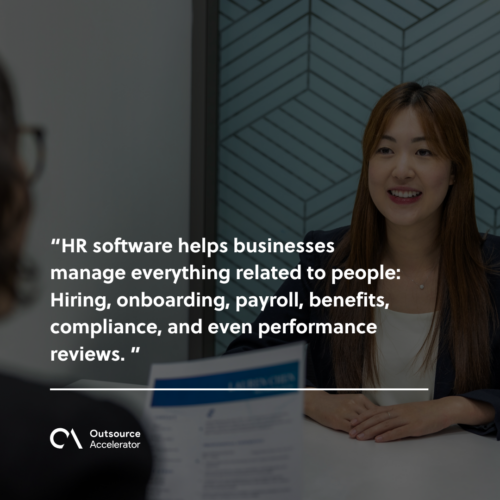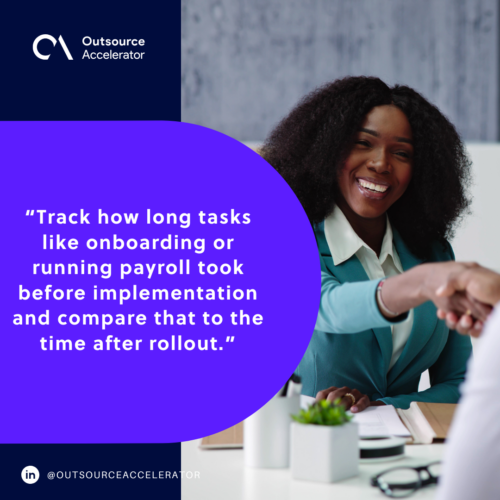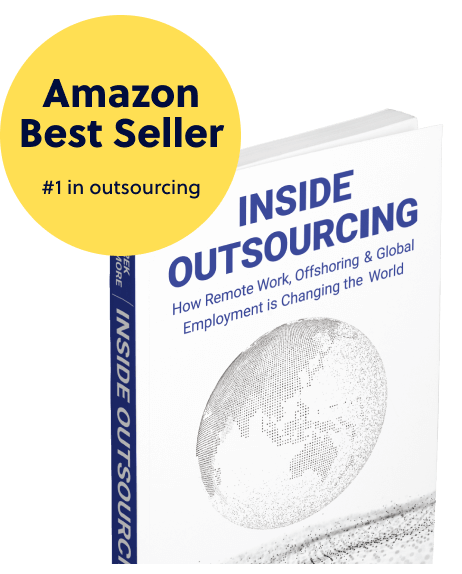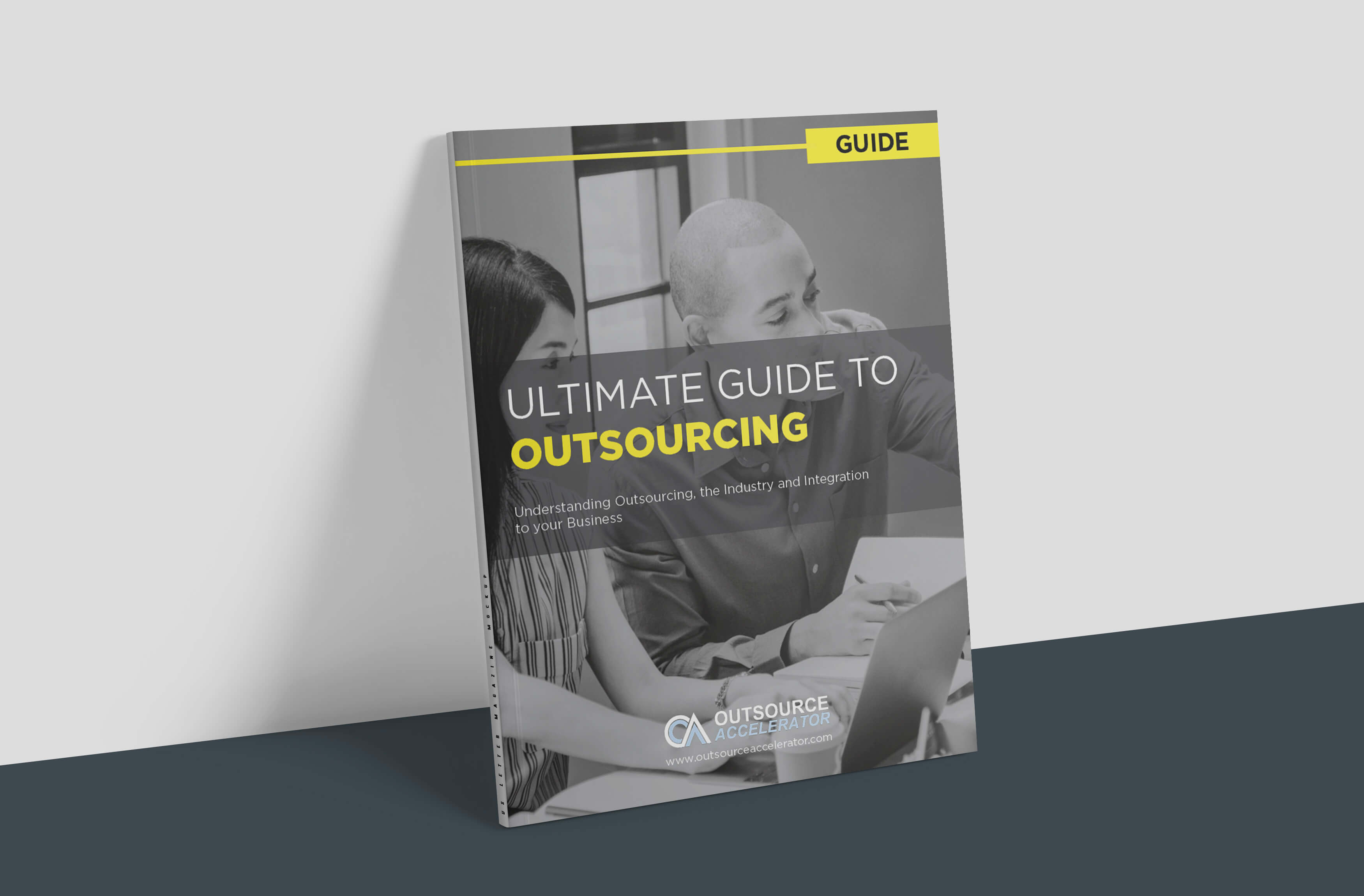HR software pricing: A buyer’s guide

Running a business means doing more with less. Less time, less budget, and sometimes, less patience.
Somewhere between onboarding your 50th employee and trying to remember where you saved that compliance document, you realize your people management needs more than a spreadsheet.
That’s why there’s HR software – the modern solution for managing your workforce without losing your mind.
But here’s the catch: The HR software market is a maze. Prices range from free to even hundreds of dollars a month, and most vendors don’t advertise costs upfront. Even worse, what looks affordable at first often includes hidden fees or locks key features behind premium plans.
Small businesses that buy software most often regret it when the total HR software pricing ends up being more than they expected, according to Capterra. That’s not surprising. Anyone would be frustrated with confusing pricing.
Whether you’re a startup founder, an HR manager at a mid-sized company, or just someone trying to stop the payroll system from crashing every other week, this article will walk you through the ins and outs of HR software pricing.
What is HR software?
Before we discuss the cost, let’s define what HR software is.
HR software helps businesses manage everything related to people: Hiring, onboarding, payroll, benefits, compliance, and even performance reviews. It automates manual tasks, reduces errors, and ensures businesses stay compliant with labor laws.

There are different types of HR software:
- Human Resource Management System (HRMS). This covers the entire employee lifecycle, from when someone is recruited all the way through to their retirement. It usually includes features for things like payroll, benefits, and performance management.
- Human Resource Information System (HRIS). This type is focused on managing all the data and information related to a company’s employees. It helps HR teams keep records and track information, and it often handles core HR tasks like payroll and benefits administration.
- All-in-one HR suites – Combines core and talent functions into one platform.
These tools save time, reduce admin work, and make data reporting easier. They also improve employee experience by making information accessible and processes smoother.
6 common HR software pricing models
Understanding how HR software is priced helps you avoid surprise costs. Here are the four most common models:
1. Per employee, per month (PEPM). Vendors charge a monthly fee for each active employee. For example, if software costs $6 PEPM and you have 50 employees, you’ll pay $300/month.
2. Per user pricing. This model charges based on the number of system users (usually HR staff or managers). If only five people use the platform, you only pay for those users.
3. Flat monthly subscription. Some vendors offer flat-rate pricing based on company size or software tier. It’s predictable and easy to budget, though not always scalable.
4. Tiered pricing. Tiered models group features into pricing tiers. Commonly, they’re categorized as: basic, professional, and enterprise. Costs go up as you move up the tiers, typically unlocking more advanced tools and integrations.
5. Freemium or open-source. Free versions often exist with limited features. Useful for very small businesses, but often require upgrades for full functionality or security.
6. One-off payment or license fee. Some legacy or on-premise systems charge a one-time license fee rather than a subscription. This model offers long-term savings, but upfront costs can be high, and updates may cost extra.
Factors that affect HR software pricing
Prices vary based on several variables. Here’s what typically drives cost up or down:
- Company size. Larger teams usually mean higher costs, especially under PEPM models.
- Features and modules. More features mean higher costs. A system with payroll, onboarding, and performance management will cost more than a basic employee database.
- Integration requirements. Connecting the HR tool to accounting, CRM, or other business systems might require custom development or third-party tools.
- Implementation and training. Some vendors charge for onboarding services, customization, and user training.
- Customer support level. Basic email support might be free, but 24/7 phone support or a dedicated account manager could come at a premium.
- Compliance and security features. If your business operates in a highly regulated industry (like healthcare), expect to pay more for features like data encryption and audit trails.
Why businesses should invest in HR tools
Some businesses hesitate to pay for HR software, but the return on investment is usually worth it.
Here’s why:
Reduced admin workload
HR software automates routine processes like payroll, benefits administration, and employee data management. This automation can save up to 3.6 hours each week (as per Salesforce).
HR teams can then focus on strategic tasks rather than paperwork. The time saved also translates to cost savings over the long run.
Better compliance
Many HR platforms include built-in compliance checks and alerts. These features help businesses meet federal and state regulations and avoid costly penalties.
Automated updates also keep policies aligned with changes in employment laws. This is especially valuable for businesses operating across multiple states or regions with different labor rules.
Improved employee experience
Self-service portals give employees direct access to their information. They can download payslips, update personal details, and request time off without waiting for HR.
This boosts transparency and trust within the company. It also reduces the number of admin queries HR needs to handle.
Data-driven decision-making
Most HR software includes analytics dashboards. These offer insights into hiring speed, turnover rates, and workforce demographics.
Leaders can use this data to make more informed hiring, training, and retention decisions. It turns HR from a reactive function into a strategic one.
Scalability
Manual HR processes often can’t keep up with a growing business. HR software supports expansion without a matching increase in headcount.
Whether you’re adding ten or 100 employees, the system adapts. This scalability is crucial for fast-moving startups and growing SMEs.
How to evaluate free HR software
Free sounds great, but it often comes with limitations. Here’s how to know if a free option works for your business:
1. Check the feature list. Make sure the software includes essentials: Employee records, time tracking, payroll, or whatever your business needs.
2. Watch for upgrade pressure. Freemium tools may constantly push you to upgrade. Pay attention to how much functionality you get before it becomes unusable. Watch out if the extras you’re paying for are becoming more expensive than the paid versions.
3. Review data privacy policies. Free tools sometimes monetize user data. Make sure they meet your standards for security and compliance.
4. Confirm support access. Is there customer support? Or are you stuck with community forums and bots?
5. Look for integration limits. Free tools may not connect with your payroll provider or accounting software.
How to know if your HR software provides ROI
You don’t just want a system that works. You want one that pays for itself.
To figure out if the HR software pricing is worth it in line with the ROI, start by measuring the time it saves your team. Track how long tasks like onboarding or running payroll took before implementation and compare that to the time after rollout.
Multiply the hours saved by the average wage of the employees handling those tasks. Those are hard savings.

Next, look at the errors. If you’ve had fewer payroll mistakes or missed compliance deadlines since adopting the software, that’s money saved on fines, corrections, and admin hours.
You should also monitor employee turnover. Tools that improve engagement and onboarding can reduce churn, saving the average $4,700 it costs to replace a single worker, according to SHRM.
Dig into how the software improves internal processes. Are you hiring faster? Are performance reviews happening on time? Built-in analytics can help identify improvements that weren’t possible before.
Finally, think about avoided costs. If the software allowed you to delay hiring an extra HR staff member or eliminated the need altogether, that’s real, measurable value.
Examples of popular HR software and how much they cost
Here’s what top HR tools charge as of 2025:
1. Zoho
Here is a detailed summary of Zoho People’s pricing plans:
Free – US$0/user/month billed annually
- Employee database management
- Time-off management (Leave)
Essential HR – US$1.25/user/month billed annually
- Onboarding
- Employee database management
- Document management
- Time-off management (Leave)
- HR reports
- Zia AI bot
Professional – US$2/user/month billed annually
- Attendance management
- Timesheets
- Roster management
Premium – US$3/user/month billed annually
- Performance management
- Compensation management
- Employee engagement
- Advanced HR analytics
Enterprise – US$4.50/user/month billed annually
- HR help desk
- Learning management system
- Sandbox
2. Gusto
Gusto does not have a free plan, but it allows you to set up your account and onboard employees for free. You only start paying when you run your first payroll.
They also offer a 25% discount for the first three months on the Plus and Premium plans. Here is a detailed summary of Gusto’s pricing plans:
Simple – $49 per month base price + $6 per person per month.
- Full-service single-state payroll
- Employee profiles and self-service
- Basic hiring and onboarding tools
- Health insurance administration
- Employee financial benefits
- Payroll and time-off reports
- Custom admin permissions
Plus – $80 per month base price + $12 per person per month. Includes everything in the Simple plan, plus:
- Full-service multi-state payroll
- Next-day direct deposit
- Advanced hiring and onboarding tools
- PTO management and policies
- Time tracking and project tracking
- Time Kiosk
- Expenses and reimbursements
- Team management tools
Premium – $180 per month base price + $22 per person per month. Includes everything in the Plus plan, plus:
- Dedicated Customer Success Manager
- HR Resource Center
- Compliance alerts
- Access to certified HR experts
- Full-service payroll migration and account setup
- Health insurance broker integration
- R&D tax credit discount
- Priority support
Contractor Only – $35 per month base price + $6 per contractor per month.
- Unlimited contractor payments across all 50 states.
- Four-day direct deposit.
- 1099-NECs at the end of the year.
- New hire reporting (if required in your state).
- Global contractor payments (as an add-on).
Note: The $35 monthly fee is often waived for the first six months.
Featured Add-ons
- Time & Attendance Plus – +$6 per person per month (after a free trial). Includes time and project tracking, custom time off policies, scheduling, and attendance management.
- Next-Day Direct Deposit – +$15 per month base fee + $3 per person per month. Allows eligible businesses to run payroll the day before payday.
- Priority Support and HR Resources – +$8 per person per month (available with the Plus plan). Provides prioritized access to phone and chat support, certified HR experts, the HR resource centre, and compliance alerts.
3. Deel
Here is the pricing plan for Deel HR, which includes performance, feedback, learning, and career tools. Its dedicated HR platform also integrates with HR Slack plugins:
Deel Engage – $20 per worker per month.
- Performance management features
- Surveying capabilities
- Learning management features
- Career management features
Deel Compensation – Starts at $15 per employee per month.
- Compensation reviews and planning
- Budgeting tools
- Global salary benchmarking
- Global market insights
- Automated payroll adjustments
- Pay transparency enablement
- Multi-currency and localized compliance
Deel Workforce Planning – Starts at $18 per employee per month.
- Organization chart modeling
- Shareable headcount, scenario planning
- Budget and cost analysis
- AI-driven distribution recommendations
- ATS and Deel Compensation integration
- Custom approval and request flows
- Plan attainment tracking
HR software pricing doesn’t need to be a mystery. The key is to focus on what your business actually needs, then work backward from there.
Don’t get dazzled by long feature lists if you only need basic tools.Further, don’t ignore long-term costs like training or system upgrades.
Take the time to compare vendors and ask for demos. Negotiate, and make sure to look beyond the sticker price. A good HR platform should not just make your life easier, but also help you grow a smarter, more resilient team.







 Independent
Independent




